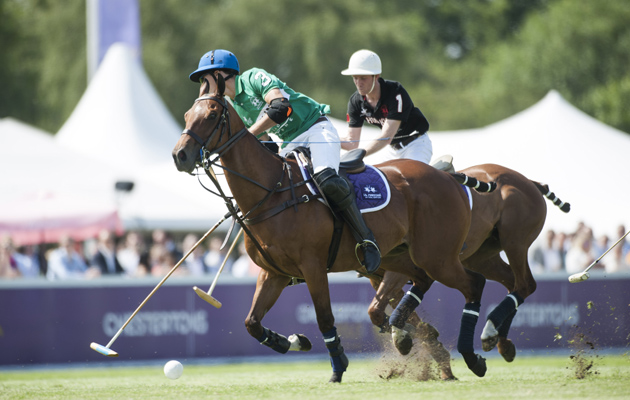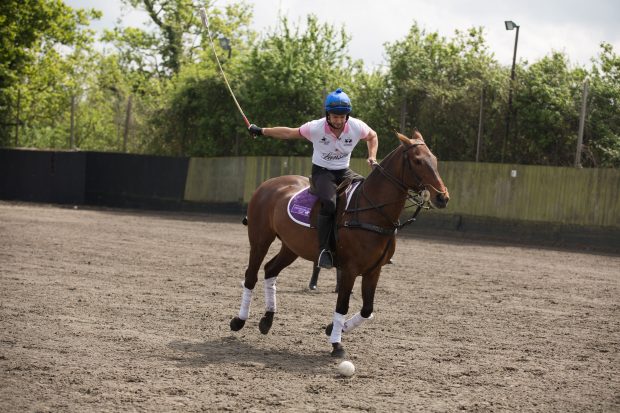Polo in the Park, which took place last weekend (5-7 June 2015), provides polo with a difference. Its smaller than usual field and simplified rules have been attracting spectators to the event for seven years, most of whom have never seen polo before. But how do players react to the differences?
A smaller field
Probably one of the most significant differences for players is the smaller field, and high boards, behind which the — often excitable — crowds stand just a few feet back.
“The horses often don’t like to go close to the boards, and it can be pretty difficult to actually get them in there with all the crowds. We try to play fast and create space between us and the crowd to compensate,” says James Beim. “But it’s always great to play in front of a large crowd — and good for the sport as well.”
This change does eliminate one of the least spectator-friendly aspects of traditional polo — even the most committed polo fans tire of squinting into the distance to work out what’s going on. Instead, the action is always close to hand, with spectators able to hear players communicating on the field and feel the thunder of hooves.
The ‘Lanson Perfect Start’
Unique to Polo in the Park is the “Lanson Perfect Start”, in which matches begin with a member of each team galloping from their own goalposts to try to reach the ball in the centre first. It’s far less traditional than a throw-in, which begins play subsequently, but undoubtedly an audience-pleaser.
Continued below…
South America lifted the Olympic trophy on Friday (5 June), in the first international match to be held at the

South America triumph over England at London’s Polo in the Park
A larger, lighter ball
Then there’s the matter of the ball. Unlike in regular field polo, which uses a ball made of plastic or wood, weighing four and a half ounces, Polo in the Park uses a larger, lighter ball, similar to those used in arena polo. This makes the polo safer for those spectators too engrossed in their cocktails to watch for flying balls, but can be frustrating for players, especially when the slightest breath of wind catches the ball, and carries the most well-taken penalty to one side.
“The ball goes all over the place and bounces everywhere, as well as off the boards, which makes it a bit of a lottery,” says James Beim.
Scoring
When it comes to the scoreline, a double-scoring goal — hit from outside the 45-yard ring surrounding each set of goalposts can, and often does, make all the difference. English hopes were dashed during Friday’s international clash against South America, when Argentine eight-goaler Guillermo Terrera put away the final goal of the game from 50 yards out, securing his team two goals and putting paid to England’s hopes of victory.
Changing ends at half-time
One of the more confusing rules for the initiated in traditional polo is the changing of ends after each goal scored. However, there’s no excuse to get confused at Polo in the Park, where teams change ends only at half-time. Spare a thought for the players during evening matches though – England were heading straight into the setting sun as the shadows lengthened during the latter half of Friday’s international.





